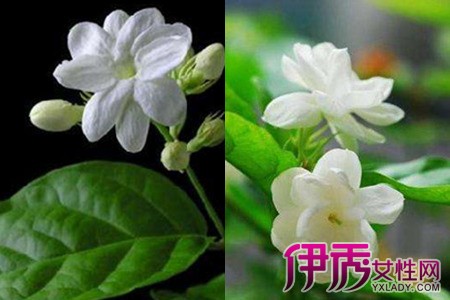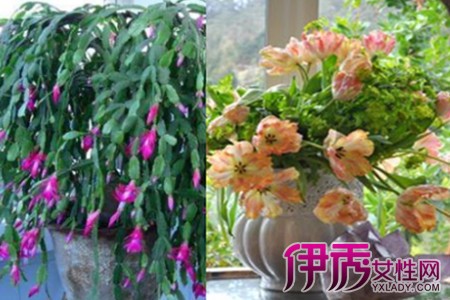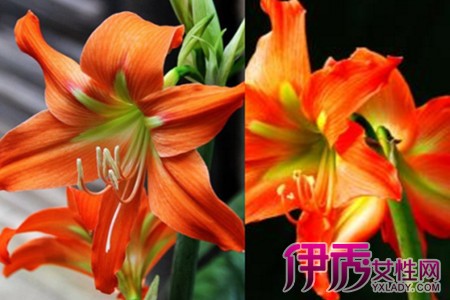You must know this little knowledge about the cultivation of jasmine.

When I was young, I often bought air fresheners at home. Nowadays, a lot of people buy air fresheners, which are used in places such as bedrooms or bathrooms. Among them, the most popular smell can be said to be jasmine. The smell of jasmine itself is very good, and it is plain to ask. Not as strong as roses smell, nor as tasteless as lotus flowers. Gently smell the fragrance of jasmine, as if it was spring.
That kind of elegant aroma stayed in the nasal cavity for a long time and did not want to leave. The jasmine not only smells intoxicating, but also blooms beautifully. Crisp leaves, accompanied by pure white flowers. People can't help but think of their favorite people wearing pure white clothes, standing in the sun waving to you.
Yes, jasmine is so charming. Because, more and more people also like to plant some jasmine at home. It can not only improve the air at home naturally, but also make people relaxed and happy. More importantly, it is pure white and beautiful.
But how to raise jasmine? Is it just like ordinary plants to water it? Next, I will introduce to you some methods of cultivating jasmine. Jasmine is mainly distributed in the south of our country, so for jasmine, it is more accustomed to the humid climate and likes the semi-overcast environment.
Most species of jasmine can not stand the cold environment, when the temperature is relatively low, the branches and leaves will be "frostbitten" phenomenon. Therefore, even if you raise jasmine in the south, you should pay attention to moving the jasmine into the house in winter. Do you really want to raise a jasmine plant when you know this? Come on, let's do it.
The method of jasmine culture matters needing attention in jasmine culture
Most varieties of jasmine are afraid of cold and drought, and are not resistant to frost, waterlogging and alkaline soil. When the winter temperature is lower than 3 ℃, the branches and leaves are easy to suffer frost damage, and if they last for a long time, they will die. Deciduous vines are very cold-resistant and drought-resistant. Jasmine likes to be warm and humid, and grows best in a well-ventilated and semi-shady environment, so there are certain requirements for the environment in jasmine culture, so how to breed it better? Next, I would like to tell you about the breeding methods and matters needing attention of jasmine, hoping to help you.
Culture methods of jasmine flowers
1. Soil quality. Jasmine pot culture requires that the cultivated soil is rich in organic matter, and has good water permeability and aeration properties. Generally, 4 parts of pastoral soil, 4 parts of compost, 2 parts of river sand or grain bran ash, plus an appropriate amount of fully rotten dried cake, chicken and duck manure, and sift out the powder and coarse grains, cover the bottom with coarse grains. It is better to cultivate jasmine in fertile sandy and semi-sandy soil and grow in slightly acidic soil with a pH value of 6-6.5.
2. Put on the basin. The most suitable time is before the new shoots germinate from April to May every year. Choose the right flowerpot according to the size of the seedling. Hold the seedling with one hand and fill the culture soil with the other. After the soil covers all the roots, lift the plant slightly upward and vibrate the basin a few times to make the soil in close contact with the root system. Then compact the basin soil by hand, so that the soil surface is 2 centimeters away from the edge of the basin, leaving it for watering.
3. Moisture. After planting, pour root water, and then put it in a slightly shaded place for 7-10 days to avoid direct sunlight, and then gradually see the light. The key to daily management is water. According to the characteristics of jasmine like wetting, drought tolerance, fear of stagnant water and air permeability, we should master watering time and amount of water. It can blossom from June to July. At this time, the root system has returned to normal growth, and thin alum fertilizer water should be irrigated every 7 to 10 days. In the future, it can be managed according to adult jasmine, and the pot will no longer be changed in that year.
4. Fertilization. From June to September, liquid fertilizer with more phosphorus is frequently applied, preferably every 2 to 3 days. Fertilizer can be made of mature bean cake and fishy water fertilizer liquid, or ammonium sulfate and calcium superphosphate. In general, more chemical fertilizers will burn jasmine plants. 0.1% potassium dihydrogen phosphate aqueous solution can also be used to spray the foliar surface in the evening, or it can promote more flowering.
Matters needing attention in cultivating jasmine
1. Pruning. Jasmine grows very fast in summer, should be pruned in time, potted jasmine pruning to retain the base 10 cm to 15 cm, promote most sturdy new shoots, if the new shoots are very prosperous, they should pick the heart when growing 10 cm, promote secondary shoots, then bloom more, and the plant shape is compact. After the flower withered, the flower branches should be cut off in time to reduce the consumption of nutrients, but also promote the growth of new shoots, so that the branches are dense, buds are more, and flowers are more.
2. prevention and control of diseases and insect pests. Jasmine is often harmed by borer larvae and shell insects and red spiders, which is the most serious from July to September. It often eats buds and can be sprayed with almighty powder or permethrin plus water 200 times every semimonthly, that is, no diseases and insect pests should be sprayed in advance, and the spraying time is 9: 00 a.m. and 4: 00 p.m. on a sunny day, and should not be sprayed in the hot sun at noon to prevent drug damage.
The efficacy of jasmine
1. Jasmine tea can purge, remove dryness and dampness, reduce fire, tonify and relax, clear heat and purge fire, etc. Jasmine tea is more effective in clearing heat, detoxifying, soothing the stomach, stopping dysentery and so on.
2. Jasmine tea also has the effect of relaxing nerves. For people who are nervous, you might as well have a cup of jasmine tea, which can not only achieve happiness, but also help to maintain a stable mood. Gargle with jasmine tea can remove grease, strengthen teeth and prevent bad breath.
3. Jasmine tea not only has medicinal effect, but also has certain detoxification effect. Jasmine tea also has the functions of losing weight, preventing tooth decay, preventing cardiovascular disease, intestinal disease and so on.
The above is for you to talk about the jasmine culture methods and points for attention, everyone is clear? Please pay attention to more knowledge of home decoration.
The whole part of Jasmine Culture-- talking about the methods and matters needing attention of Jasmine Culture
Speaking of jasmine, I believe everyone will be familiar with it. The color of jasmine is pure white, its fragrance is charming, and its petals are small, but it is very charming. Many flower lovers also raise jasmine at home. Lemon, do you know the breeding methods and precautions of jasmine? Today, the editor will give you a detailed introduction.
Jasmine is a long sunshine positive plant and likes hot and humid climate. When the temperature is below 3 ℃, the twigs and leaves will suffer frost damage. When the lowest temperature is 0 ℃ and there is a slight frost, most of the leaves will fall off; at about 3 ℃ below zero, the branches will be in danger of freezing. For this reason, in places where there is frost in winter, it is necessary to do a good job in overwintering and keeping warm and controlling the moisture of basin soil.
When the temperature drops to 5 ℃-10 ℃, the jasmine should be moved indoors and placed in the sunny window; when the temperature is below 0 ℃, the potted flowers should be removed from the window at night, lest the cold wind blow through the window and freeze the jasmine flowers; when the room is frozen, polyethylene film bags should be used at night to cover the potted flowers with the bottom and fasten the mouth of the bag, and then put the potted flowers in a warmer place. In order to avoid the danger of suffocation of jasmine, you can also poke a few small holes in the bag.
What if the jasmine leaves turn yellow? The first is watering. Sometimes the leaves of potted jasmine suddenly turn yellow, which is caused by root rot caused by excessive watering, so watering should be strictly controlled. Watering must pay attention to the climate, plant size, branch and leaf growth and flowerpot size and other conditions, basin soil is not too dry, do not water, not only to keep the basin soil moist, but also do not accumulate water.
The second is fertilization. Under the condition that the basin soil is moist and loose, fertilize properly. After overwintering, the plant was fertilized once to promote the emergence of new buds: when the bud appeared on the new shoot, a thin fertilizer was applied to promote its blossom, and a thin fertilizer was applied again after the first stage flowers were shedding, so as to promote its early birth of the second batch of flowers. All fertilizers must be fully mature, otherwise, the flowers and trees will be "burned" after application of rotten worms or heat generated by fermentation.
Jasmine grows fast, generally changing pots once a year, mostly indoors in April. Changing pots can be combined with ramets, but the root damage must be as little as possible. After changing the basin, it should be placed in a warm and humid place to promote its germination and growth as soon as possible. Peel off the buds in time.
That's all I know about jasmine today. I hope it will be helpful for flower friends to read this article. If you want to know more about jasmine, please continue to pay attention to the succulent flower bed, we will provide you with more related knowledge!
- Prev

Learn how to grow indoor flowering plants to make the room second change garden kingdom
Compared to some green plants, most people still prefer to keep a few pots of flowering flowers at home. Flowers of all colors bloom together to make people feel like they are in a garden, so today we are going to tell you how to raise indoor flowering plants.
- Next

Understand Zhu Dinghong's breeding methods and matters needing attention to be a professional florist
Zhu Dinghong is very beautiful when she blossoms. Many people like to put a pot in the living room at home, and the leaves look good when they are not blooming, but when it comes to breeding, many people do not know how to raise them. The editor will share the methods of breeding below.
Related
- Fuxing push coffee new agricultural production and marketing class: lack of small-scale processing plants
- Jujube rice field leisure farm deep ploughing Yilan for five years to create a space for organic food and play
- Nongyu Farm-A trial of organic papaya for brave women with advanced technology
- Four points for attention in the prevention and control of diseases and insect pests of edible fungi
- How to add nutrient solution to Edible Fungi
- Is there any good way to control edible fungus mites?
- Open Inoculation Technology of Edible Fungi
- Is there any clever way to use fertilizer for edible fungus in winter?
- What agents are used to kill the pathogens of edible fungi in the mushroom shed?
- Rapid drying of Edible Fungi

